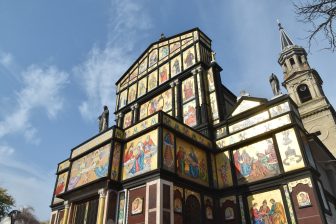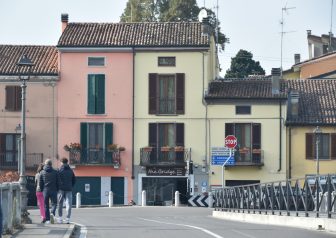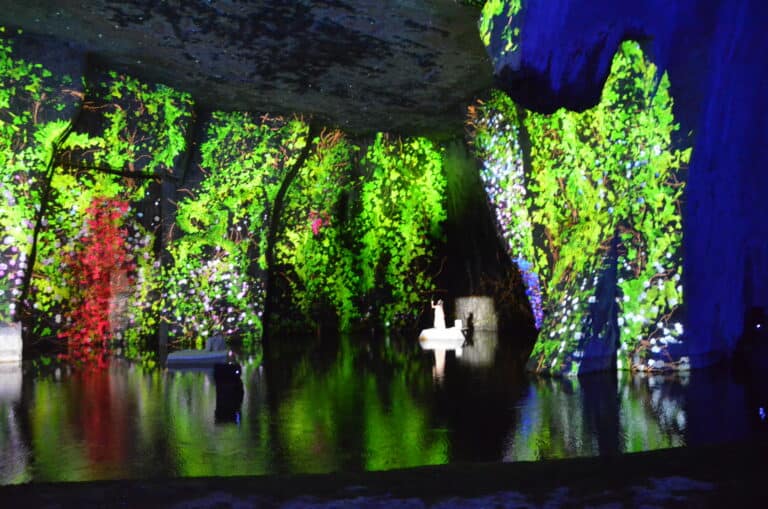
[Aug. 2022] In Syracuse on the island of Sicily in Italy, there is a place called the Neapolis Archaeological Park, where ruins such as a Greek theatre from the 5th century BC and a Roman amphitheatre from the 2nd century BC are located.
In our guidebook, it highly praised as “this is the real attraction of Syracuse”, but as I mentioned earlier, I felt sick from the excessive heat, so we skipped this Park.
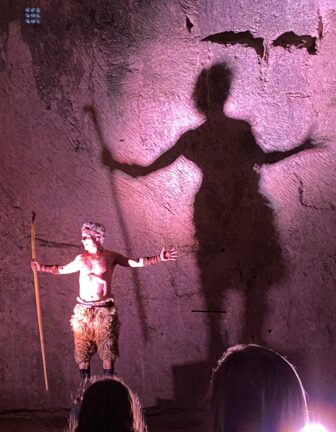
To be honest, I’m not very much interested in visiting ruins, unless there is a very interesting guide.
However, when we learned that there was a show in Neapolis, we bought the tickets in advance.
The programme was called “The Myth of Arethusa and Polyphemus” and was held in a cave in Neapolis.
I had no idea what kind of show it was, but I was fascinated by the fact that venue was a cave in the ruins.
If I remember correctly, they were held two or three times a night, and we went to the performance that started at 8:30 pm, and tickets were €25 per person.
As we were walking towards Neapolis, it started to rain, even though the forecast said it wouldn’t.
When we entered the site, the rain started to pour down in earnest, and we waited for about 20 minutes under the eaves of the building to shelter from the rain.
There was also a family with a beach parasol.
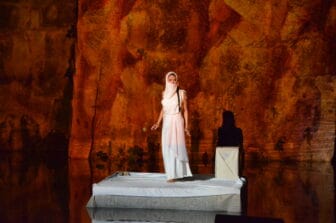
In the end, there were about 20 people as the audience and we were guided to a large cave.
First, we are greeted by the half-human, half-beast faun Pan.
He only spoke in Italian, so I didn’t understand everything, but he was a genuine actor and attracted people.
The lighting was good, too and the way the shadows floated was fantastic.
Further inside, there were three platforms floating on the spring in the cave, and there was a woman on each platform.
I was fascinated by the beautiful reflections.
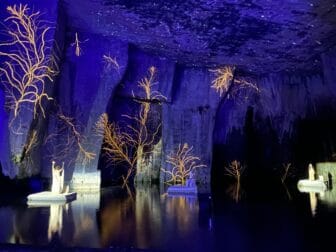
Without moving from the platform, the actresses talked and performed some actions, and the images around them change according to the story.
It was so beautiful that I was completely drawn in.
The show consisted of two parts, The Story of Arethusa and The Story of Polyphemus.
The story of Arethusa, which is associated with Syracuse, is that the nymph escaped from the river god Alpheus and became a spring in order to protect her virginity.
Two days before, we went to see the Arethusa Fountain in the old town of Syracuse.
In the scene where Arethusa bathes, the actor became completely naked.
The lighting made her look like Botticelli’s Venus.
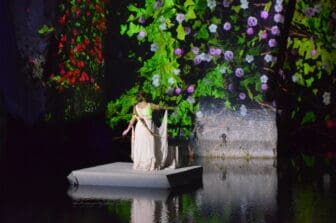
There was no figure of Alpheus, and it was represented by sound and image.
The second Polyphemus story is about the one-eyed giant Polyphemus falling in love with the beautiful sea nymph Galatea.
The story was narrated in the form of Galatea’s speech.
Galatea has a shepherd lover named Aci, but Polyphemus, enraged by his jealousy, kills Aci by throwing a rock at him.
Feeling sorry for the grieving Galatea, her father, the god of the sea, created a river with Aci’s blood, and the river flows into the sea, where Galatea and Aci can be together forever.
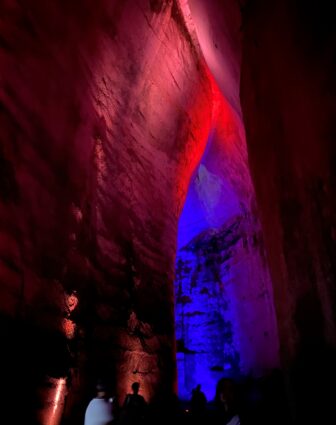
A long time ago, I went to a town called Acireale, which is located near Mount Etna in Sicily and there is a river there which people call ‘blood of Aci’.
It seems that Polyphemus plays a supporting role in the story, but since Polyphemus devotes everything and he begs Galatea to turn to him, which was the highlight of the story and I really felt sorry for him.
Polyphemus was also expressed by the production of light.
It was a really well-made show, beautiful and elegant, and I was impressed by the artistry of the creator.
After the show was over, we also visited another cave on the site of the park.
It is an artificial cave called “Ear” because the entrance looks like an ear, and it was a place where prisoners were kept in the old days.
It was said that the guards above the cave could hear the prisoners chatting because the voices echoed.

